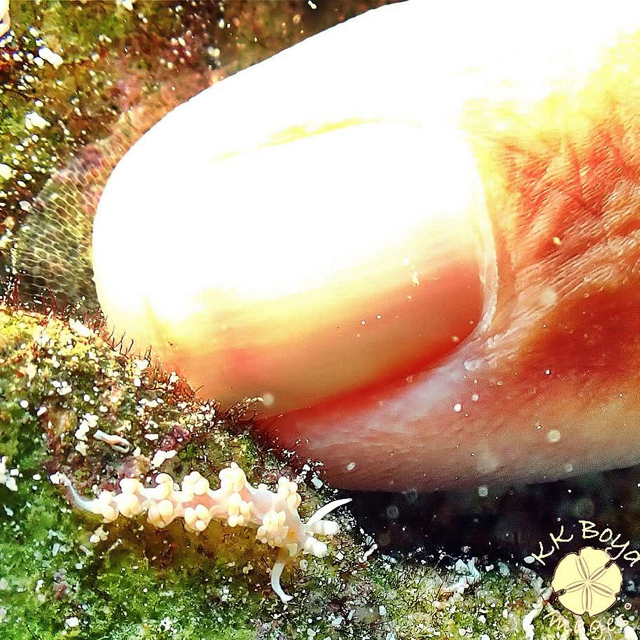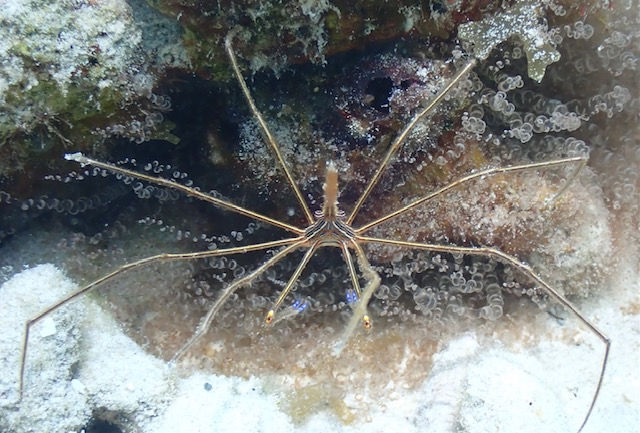Explore the Microscopic Marine Life in St. Thomas
- STT Mag

- Aug 13
- 3 min read

When most people dream about diving in St. Thomas, their minds go straight to dolphins, turtles, and shimmering schools of tropical fish. But beneath the waves lies an entirely different, almost secret world...one that only reveals itself to those willing to slow down, look closely, and let their curiosity lead the way.
Our Visiting Naturalist
For Kathleen Boyd, better known as KK; this “micro world” has become a passion. A retired scuba dive instructor now living in Curaçao, KK spends much of her time in shallow waters, searching for the tiny, often-overlooked creatures that call our reefs home. Her work is a reminder that the ocean’s magic isn’t only found in the big and bold; it’s also in the delicate, detailed, and downright adorable.
Tiny Treasures of the Reef
Among KK’s favorite finds is the Lettuce Sea Slug, a frilly beauty named for the lettuce-like patterns on its body. These slugs, which can be white, green, yellow, blue, or even a rare pink, reach a maximum length of just 2 inches. While the lettuce sea slug might be eye-catching, the Red Snapping Shrimp is all about personality...often found in the sand at places like Coki Beach, sometimes venturing out solo in search of food.
Other miniature marvels include:
Emerald Green Crabs – Maxing out at only 1.5 inches, these scavengers are masters of disguise, clinging to coral and hiding under crevices. When threatened, they use anemones as shelter.
Flamingo Tongue Sea Snails – Stunningly patterned and unique to each individual, these snails wear their beauty on their skin, which retracts when they hide.
Arrow Crabs – Long-legged, spider-like crabs that live in crevices and use coral and plants as camouflage.
Bluebell Tunicates – Vibrant, flower-like animals related to sea squirts, filtering water to capture nutrients while adding a pop of color to the reef.
The Joy of the Search
Finding these tiny creatures takes patience, a calm pace, and a keen eye. As KK describes it, “It’s a meditative experience searching for the smaller animals in the shallows.” Shallow diving allows for longer, more relaxed exploration without the pressure of deep-water breath-holding. It also means more opportunities to spot species hiding in coral cracks or blending into the ocean floor.
One of KK’s most memorable moments came when she spotted a tiny nudibranch...a colorful, soft-bodied sea slug, which sparked her passion for underwater macrophotography.

Equipment & Tips for Spotting Micro Life
For capturing these intricate details, KK uses the Olympus TG6 camera with an underwater case and the Sea Life Sea Dragon 2300 light. The TG6’s microscope mode makes it a favorite among both beginners and pros, allowing for sharp, close-up shots without the fuss.
When free diving, KK recommends:
Staying at very shallow depths for longer observation.
Using small weights to hold your position near the bottom.
Moving slowly and scanning crevices, under coral, and sandy patches for movement or color changes.
“It’s a meditative experience searching for the smaller animals in the shallows.”
Where to Go to Spot Micro Marine Life in St. Thomas
Some of the best places to spot these miniature wonders in St. Thomas are Coki Beach and Secret Harbour. These accessible shore dives are teeming with life, offering a front-row seat to the island’s tiniest residents.
Whether you’re a seasoned diver or just dipping your mask below the surface for the first time, taking the time to notice the smaller side of the sea will forever change the way you experience the ocean. As KK shows us, sometimes the greatest treasures are the ones we almost overlook.

How Can You Explore the Reefs in St. Thomas?
Visitors to the Virgin Islands can experience the island’s underwater world in an entirely new way by slowing down and looking for its tiniest residents. Grab a mask, snorkel, and a waterproof camera, and head to shallow, calm spots like Coki Beach or Secret Harbour. Move slowly, scan the coral for movement or bright pops of color, and let curiosity guide you.
The more patient you are, the more the reef will reveal...transforming an ordinary swim into a magical treasure hunt beneath the waves.









Comments